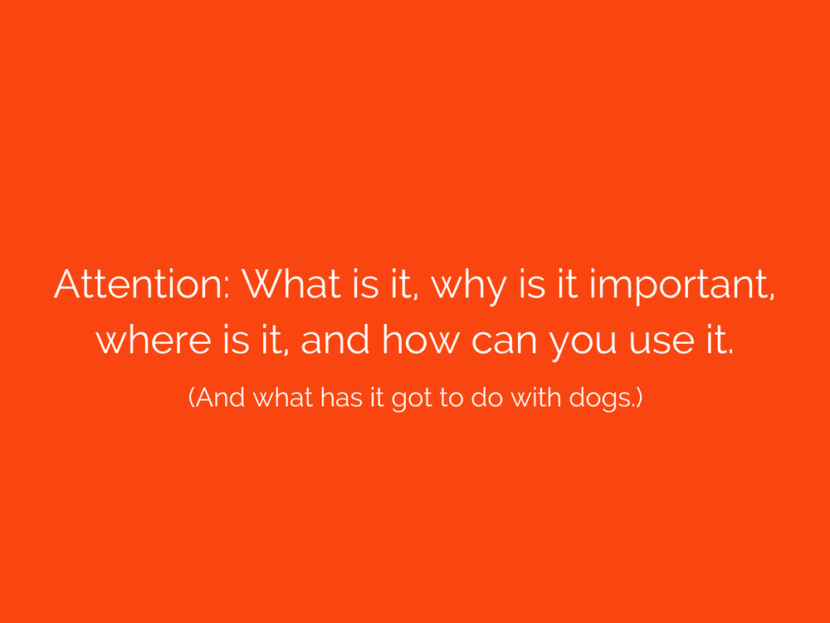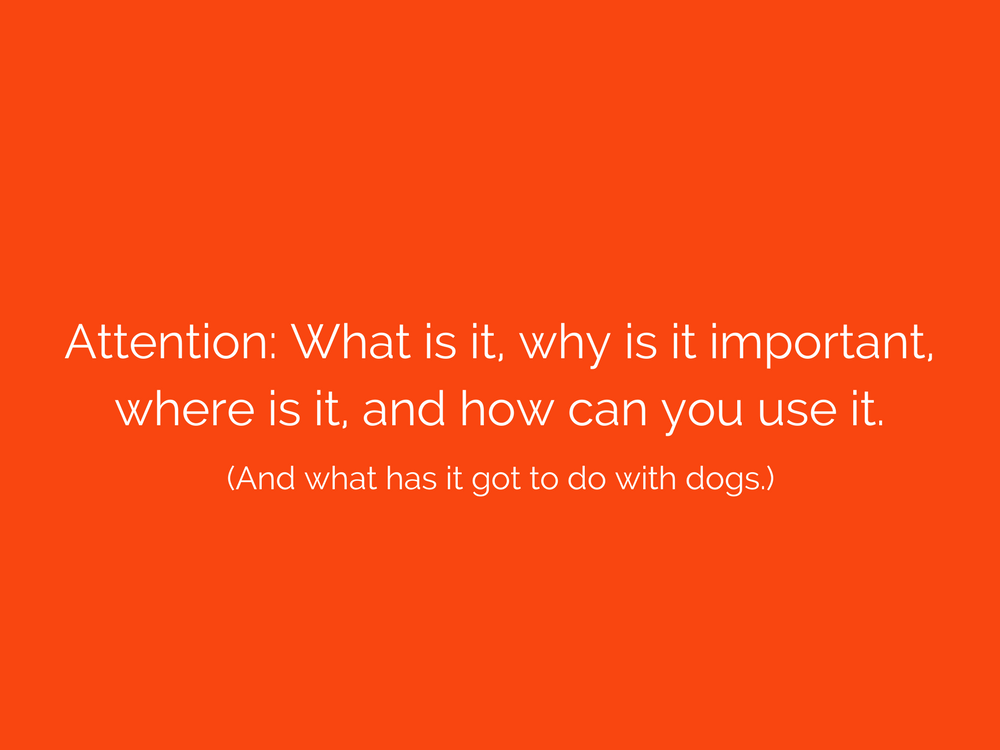My dog is called Elvis.
I think he loves me because of the attention he gives me.
It’s no accident though. It’s because he knows how his bread is buttered. If he gives me attention, I’ll give him some in return. And vice versa.
A dog’s brain is much smaller, and therefore simpler than a human’s. But it works very similarly to our cognitive processes.
When I was training Elvis as a puppy I used treats of dried tripe.
To Elvis, this smelly and ‘tasty’ offal was as addictive as crack cocaine.
For me to reward the kind of behaviour I wanted I lured him with the smell and when successful rewarded him with the taste.
The smell signalled I wanted his attention. He perceived his attention had some value to him. He was right. If he acted the way I wanted he got his reward.
Obviously getting a dog’s attention in order to get him to act in a way I want is not the same as getting people to buy products, but the process is.
Attention is generated through sending a signal to a sensory receiver, that when ‘received’ is remembered as significant and motivating.
In Elvis’ case the holding of a treat sends a signal which is received through his nose and thus begins the cognitive process: ‘that smells like the stuff that I remember tastes delicious, so I will pay attention’.
He pays attention because he perceives a value in the exchange, which will lead to an action and reward.
So it is with advertising: Advertising is the process of moving an audience towards an action.
To generate action the audience must be motivated to act. Motivating that audience relies on their perception.
Their perception is a result of the ‘organisation, identification, and interpretation of information received through their senses to represent and understand their environment.’
For the product, service or point of view to be ‘bought’, its value must be perceived.
To be perceived the value must be signalled using cues, like doggy treats.
Perception is not the passive receiver of signals, but is shaped by learning, memory, expectation, and begins with attention.
Attention is a gateway to the rest of cognition.
Without attention we cannot have perception.
Without perception we cannot have a value exchange and the audience will not act in the way required.
So where is attention.
Lets go back to Elvis.
Dogs main sensory input is through it’s nose. In the house with the windows closed a small piece of tripe is all that he can sense. He can’t see it, he can’t hear it, but it’s all he can perceive. His brain focusses his attention on that and only that. I don’t have to work very hard to get his attention.
But in a field I am competing with lots of other smells, sights and sounds. Some familiar, many unfamiliar. Some more interesting than others. Capturing and keeping his attention is a much more complicated endeavour.
Choosing the field to transmit your message is as important as the message itself.
Holding Elvis’ treat in your hand when he’s 100 metres away smelling another dog is not going to get his attention. Neither is jumping up and down. But, shouting the word ‘treat’, while simultaneously jumping up and down waving the treat might.
It does with Elvis most of the time, because he’s been programmed to pay attention to those cues.
But the guaranteed way to get his attention is to do all those things in our yard. There are no other dogs, and no other smells, sights or sounds to distract. That’s why I trained him there. Not in a field.
Creating effective advertising means understanding what motivates your audience and signalling appropriately with the right cues in the right place. Then repeating those cues over a period of time in order to imprint the perception and repeat the required action.
So create tasty creative treats and position them in places where there is less competition for attention, or the cost of that place is more effective. and do it over and over again.
That’s how you should use messages and media.
It’s how we do it at Electric Agency.


